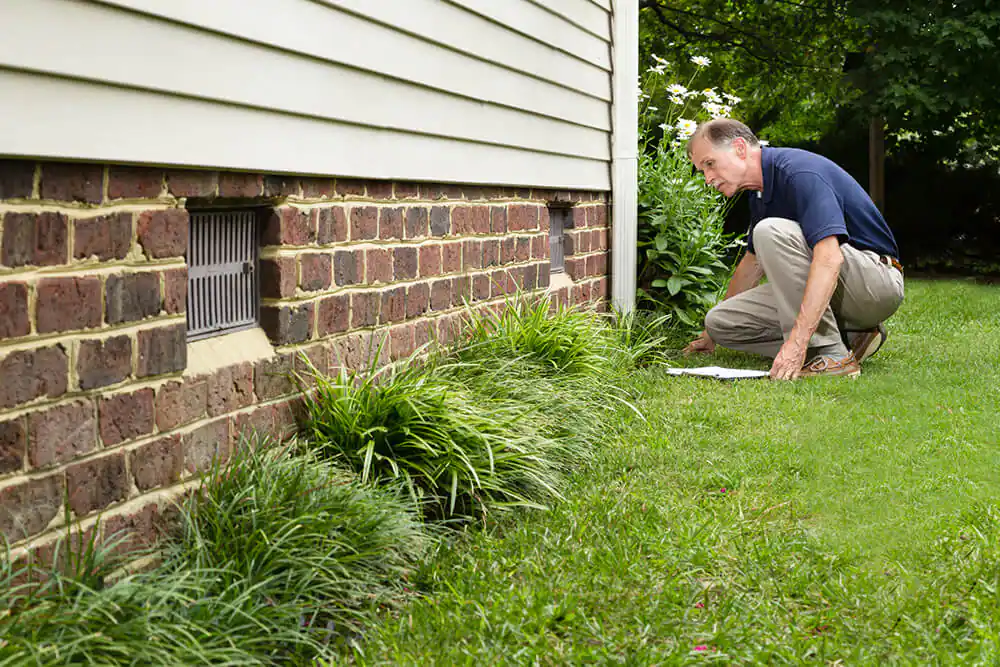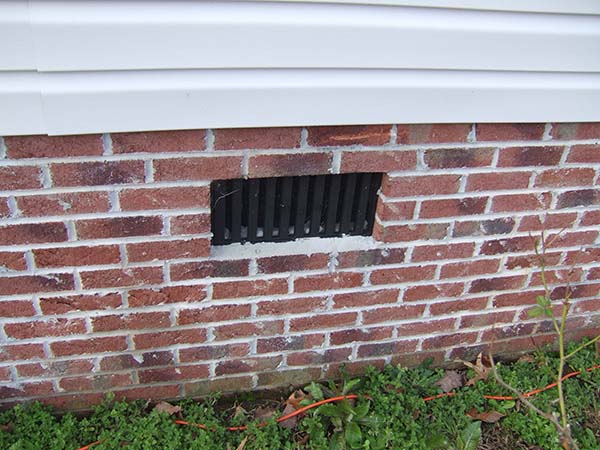Ventilation in your crawl space is important, but ensuring those vents are properly sealed is equally important. If you don’t seal them correctly, air leaks and moisture can enter the space, leading to mold and other issues.
Addressing the issue, the post will discuss why it’s important to seal your crawl space vents, the steps to seal them correctly, and how to avoid common mistakes. We’ll also touch on materials to seal your crawl space vents. Let’s get started.
Why It’s Important to Seal Crawl Space Vents
Several reasons make sealing crawl space vents important, including:
1. Prevent Mold And Mildew
For any homeowner, mold, and mildew should be a cause for worry. The moist environment in the crawlspace can provide ideal conditions for their growth. By sealing crawl space vents, you’ll prevent air from entering the area that could bring in more moisture, making it prone to mold and mildew growth.
2. Improve Energy Efficiency
Another benefit of sealing crawl space vents is improving energy efficiency throughout the house. When outside air enters through open crawl space vents, it brings in cold air during winter and hot air during summer, which could significantly increase your energy bills as the HVAC system needs to work harder to maintain an optimal temperature inside the house.
3. Keep Pests Out
Unsealed crawl space vents create an easy entry point for pests such as rats, mice, and other bugs. Sealing the crawl space vents can prevent these from entering your home, making it a safer environment for you and your family. Also, this will help eliminate the need to use costly pest control methods.
4. Keep Out Pollutants
An unsealed crawl space is susceptible to outdoor pollutants and allergens, such as dust, pollen, and other tiny particles. This can cause a range of health issues in the household, including respiratory problems, coughing or sneezing fits, etc. You’ll keep these irritants from the crawl space and your home by sealing the vents.
5. Reduce Humidity
High humidity levels in the crawl space can cause several problems, such as damage to your home’s foundation and structure, wet insulation resulting in higher energy bills, etc. Sealing the vents will help reduce humidity levels, making it a more comfortable environment for everyone at home.
Vented Vs. Unvented Crawl Spaces
Not all crawl spaces are created equal. The composition of your crawl space can depend on the age of your home and its location — a 1950s Arizona house will look differently from a newer build in Seattle, for instance.
Warmer climates such as Arizona typically don’t require crawl space vents since the dry soil, and sunny weather help reduces moisture levels in the home. However, more humid areas benefit immensely from proper ventilation and insulation to prevent water buildup.
Also, it is important to note the differences between vented and unvented crawl spaces. Vents allow fresh, dry air to flow into the basement, while an unvented crawl space creates a closed system where moisture levels can build up quickly.

Age Of Home And R-Value
For houses built in the 1940s and 1950s, their most crawl spaces had little to no insulation, making it difficult and costly to keep warm. During that time frame, most homes possessed an R-11 rating – now classified as lower than today’s regulations.
R-value essentially calculates how well a home can impede heat from transferring. The bigger the R-value number, the more effective and energy-efficient its insulation.
Nowadays, roofs need to have a minimum R-value of 30 or over. Anything under that should be inspected for possible insulation issues. Ensure your home’s roof has the right level of insulation to keep your home warm and energy-efficient!
How To Seal Crawl Space Vents?
Sealing vents is a relatively simple task that can be done in a few hours with basic tools and materials. Here are the steps you will need to take to seal your crawl space vents effectively:
1. Gather Materials
The first step is to gather the materials you need to seal your crawl space vents. This includes a caulk gun, weather-resistant foam insulation, duct tape, and a utility knife. You’ll also need a ladder to reach the upper parts of the crawl space. For best results, ensure the insulation is specifically designed for crawl spaces.
2. Prepare The Vents
You will need to prepare the vents before sealing them. Use a utility knife or other sharp tool to remove any dirt or debris that may have accumulated on the vent opening. This helps ensure proper adhesion of the caulk and foam insulation. Also, ensure all the screws are tightened securely to ensure a proper seal.
3. Address Moisture Issues
If moisture is present in the crawl space, it must be addressed before sealing the vents. You may need to install a dehumidifier or other ventilation system to help reduce humidity levels and prevent mold growth. Also, inspect for any standing water, leaks or other issues causing the moisture.
4. Apply The Crawl Space Insulation
Once the vents have been prepared and moisture levels are controlled, you can begin sealing them. Start by applying a generous bead of caulk around the perimeter of the vent opening and allow it to dry completely before proceeding. Once the caulk has dried, cut pieces of foam insulation to fit snugly into the vent opening and secure them with duct tape. Also, check the vents periodically to ensure they are still sealed properly.
5. Check For Any Leaks
Finally, check for any air or moisture leaks that may have been missed during sealing. If you find any, reapply caulk and foam insulation as necessary to ensure a complete seal. Also, inspect the seals regularly for any signs of weakness or damage.
6. Install A French Drain
If your crawl space has a high water table or is prone to flooding, installing a French drain around the area’s perimeter may be necessary. This will help keep moisture out and ensure leaks are quickly detected and addressed.
These simple steps should give you an air-tight seal for your crawl space vents and keep your home safe from water damage and mold growth.
Safety Precautions
Before you seal your crawl space vents, you must take a few safety precautions.
- Ventilation: Proper ventilation is important to prevent moisture, rot, and mold buildup. Ensure that your air vents are properly sized and placed away from moisture or heat sources.
- Protection: Wear protective clothing, gloves, and eye protection when dealing with sealants, nail guns, and other tools.
- Knowledge: Familiarize yourself with the different types of vents and how to seal them properly.
- Next Steps: Once you have taken safety precautions, it is time to start sealing your crawl space vents. Follow our steps to protect your home from moisture and mold buildup.

DIY Crawl Space Encapsulation Vs. Hiring Professional
Sealing your crawl space vents with do-it-yourself encapsulation can be tempting, especially if you’re trying to cut costs. However, hiring a professional for the job has advantages worth considering.
First, professionals have the knowledge and experience to do the job right the first time. They understand the different types of vents and how best to seal them, can find potential problems you might not have seen and can provide quality assurance for your project. Plus, they will have access to more durable professional-grade materials than in stores.
In addition to proper installation, hiring a professional also gives you peace of mind. They will take the time to inspect your crawl space and develop a solution that meets your needs rather than just trying to seal it as quickly as possible. With a professional in charge, you can ensure the job has been done correctly and safely, preventing potential problems of encapsulated crawl space.
FAQs
1. What’s The Cost To Seal Crawl Space Vents?
It would be best if you planned for labor and materials costs to seal the crawl space vents. Labor cost depends on the area’s size, vapor barrier presence, the installation’s complexity, and whether or not any additional work is required, such as caulking or air sealing. Materials are priced according to type, quantity, and quality needed.
2. Is Sealing Crawl Space Vents Necessary?
Sealing the crawl space vents is essential for maintaining a healthy and energy-efficient home. Crawl spaces are prone to excess moisture from condensation, which can cause mold and mildew growth, leading to serious health risks. A sealed crawl space will help control the area’s air temperature and humidity levels, reducing mold and mildew growth.
3. What Kind Of Caulk Should I Use To Seal The Vents?
The type of caulk you should use will depend on the sealed material and the environment in which it is used. Generally speaking, a silicone-based caulk works best for sealing vents. Silicone is waterproof, flexible, and has excellent adhesive properties. It also won’t crack or shrink over time.
4. Do I Need Any Special Tools To Seal The Vents?
You will need a few basic tools to seal the vents. These include a caulking gun, utility knife, putty knife, and tape measure. Having an old towel or rag on hand is also helpful for cleaning up any messes while sealing the vents.
5. How Long Does It Take To Seal Crawl Space Vents?
It will depend on the size of the area, as well as the complexity of the installation. Generally speaking, sealing the crawl space vents should take a few hours if you are working alone. However, if you enlist help from a professional, it can be done much more quickly.


